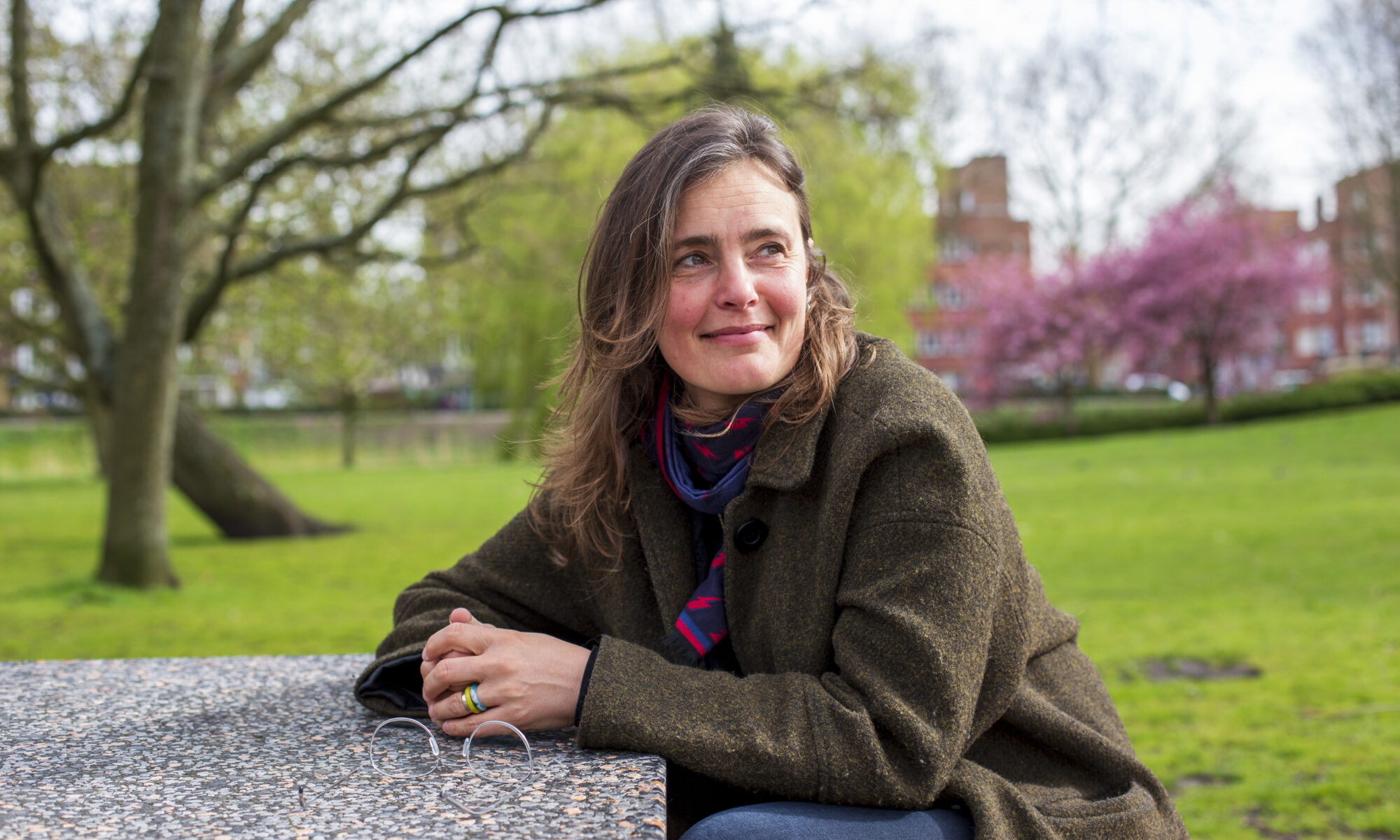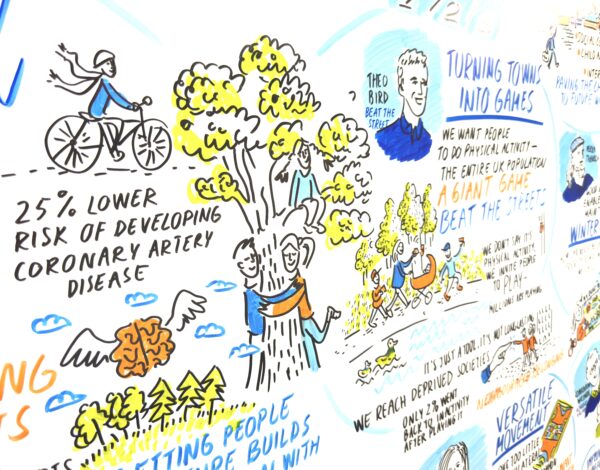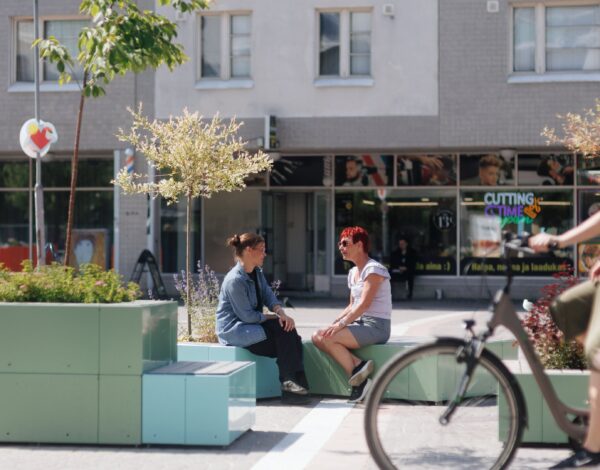Tell us a little bit about yourself
My name is Ioana Biris and I am the founder of Nature Desks. You could call it a social enterprise about connecting nature, work and wellbeing through various projects, like events, green & blue city maps and research. But I see it more as a platform because of the network of partners and friends that are involved. I love working with a community of people creating various projects which raise awareness, pose questions or come up with solutions helping us to live, work or study in relation to urban nature and the positive effects it has on our mental wellbeing. Nature Desks would not succeed if I wouldn’t work together with so many brilliant friends. It has become my personal mission to highlight other people’’s work.I invite everyone who visits our website or social media profiles to take time and read about our partners and their projects.

Why did you become a social psychologist who’s passionate about urban nature, better cities and wellbeing?
Well, first I trained as a medical doctor in my home country Romania. Then I became a social psychologist in the Netherlands. My professional interests shifted during the years. I basically moved away from trying to fix a problem and enjoyed coming up with ideas on how to prevent the problem. This might sound like a simplistic explanation, but it was a gradual process many of us might recognise. You are learning, questioning what is really relevant in life and how you can leave a better place for your children. Besides understanding the human psyche and the way we perceive others or the surrounding environment is quite fascinating. And it gets even more special when you can contribute to a better and healthier future together with like-minded people.
What is your favourite city and why/what can we learn from it?
Quite a few cities come into mind. But my answer is 100% Amsterdam because it is home to me. The city is small enough to feel intimate but also large enough to be able to get lost. It has the quality of surprising me each time and I haven’t met a person living here who is not proud of this aspect. What I’ve learned coming from a small Eastern European city is the importance of being active and having an active community.
Together with our friends from Urban Good – and inspired by the initiative National Park City Foundation – we created the green and blue map #UrbanNatureAmsterdam as an ode to the city. It offers a different perspective and invites the ‘reader’ to be actively involved. The past three to four years I walked thousands of kilometres on the streets of Amsterdam delivering maps, experiencing so many inspiring local initiatives, discovering green gems and learning about other initiatives. I believe nature should start at your doorstep. The city is – like many other cities – growing in terms of residents and built environment. It is vital to protect urban nature. We should add nature. When we build houses and offices, we must build ‘with nature’ in mind according to the principles of Nature Based Solutions. Our urban nature maps aim to inspire, inform and bring together the bottom-up initiatives addressing local policies in order to make better, greener and healthier cities.
You are the founder of Outdoor Office Day. Why did you start it and why is taking work outdoors so important for city dwellers and office workers?
By creating the Outdoor Office Day I tried to answer a couple of questions: how do we want to work? Do we have a healthy relationship with our work, especially when it comes to white-collar workers? Today more than half of the world’s population live in cities. This trend is expected to continue: by 2050 nearly 7 of 10 people will live – and work – in cities. If we add the heightened rates of burnout, the importance of being physically active, the increasing evidence of the positive effects of nature on our well-being, we have a challenge to address: Take more regularly your work outdoors – into the urban green.
It became soon obvious that I was far from being alone in this thought: Outdoor Office Day was born as a virtual platform bringing these voices together. And why not organise on a global scale an Outdoor Office Day event on a specific day in the year, celebrating the many ways and opportunities of taking work outdoors? It can vary from a walking meeting with a colleague to a conference or a placemaking event in the public space. All participants are invited to add meaningful experiences and inspire others. On June 15 2023 we’ll celebrate the fifth edition of the international Outdoor Office Day.
And while the platform and its community is growing, we can ask ourselves: are we really able to work outdoors? Are there quiet areas in urban nature where you can meet clients or colleagues? Is your city or neighbourhood walkable and green? Is your office park or school campus area a healthy environment? If that is the case, can you and do you take work outdoors?
And if you don’t have all this, what can be done?

Do you see potential in solutions like Parky for developing urban environments?
Parkly is building nature pockets in the urban space where people can thrive. It can be a perfect solution – and a placemaking intervention – that highlights the possibilities for neighbourhood streets that lack an urban nature meeting area close-by, but also applies to office parks or campus areas. But I tend to see it more as a long term solution. I am imagining many parking lots across cities being transformed into meeting areas with Parkly. And what I like the most about this beautifully designed modular solution is that – to quote the makers – Parkly is ‘more than just a product – together with people, it forms a place’.
What is the most important topic at the moment for Dutch cities who want to develop more liveable environments?
For the existing structures the main topics would be more nature, better air quality, less cars and/or more walkable surroundings. A lot of Dutch cities are growing: more people will live there and hundreds of thousands of houses are needed. The main topic is how to grow green and healthy cities.
Dream big! What does an ideal future city look and feel like?
If I dream big then I must think of the national park city idea of Daniel Raven-Ellison and the National Park City Foundation: what if we see and treat the urban environment as a national park? It is a shared vision and journey for a better life for humans and non-humans. We can all contribute and learn from each other: either as an individual, social enterprise, small or large enterprise or official institution. To quote our friends: “Together we can make cities greener, healthier, more fair and more harmonious places to live in. Why not?”.
Save the date: the 5th international edition of the #OutdoorOfficeDay will take place this year on June 15th. Read more and stay updated: www.outdoorofficeday.nl


